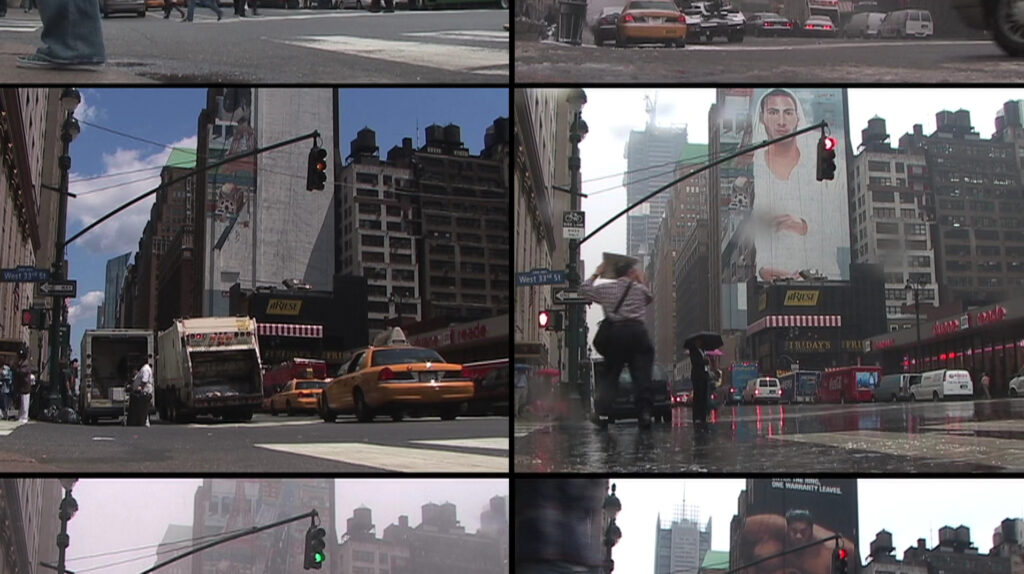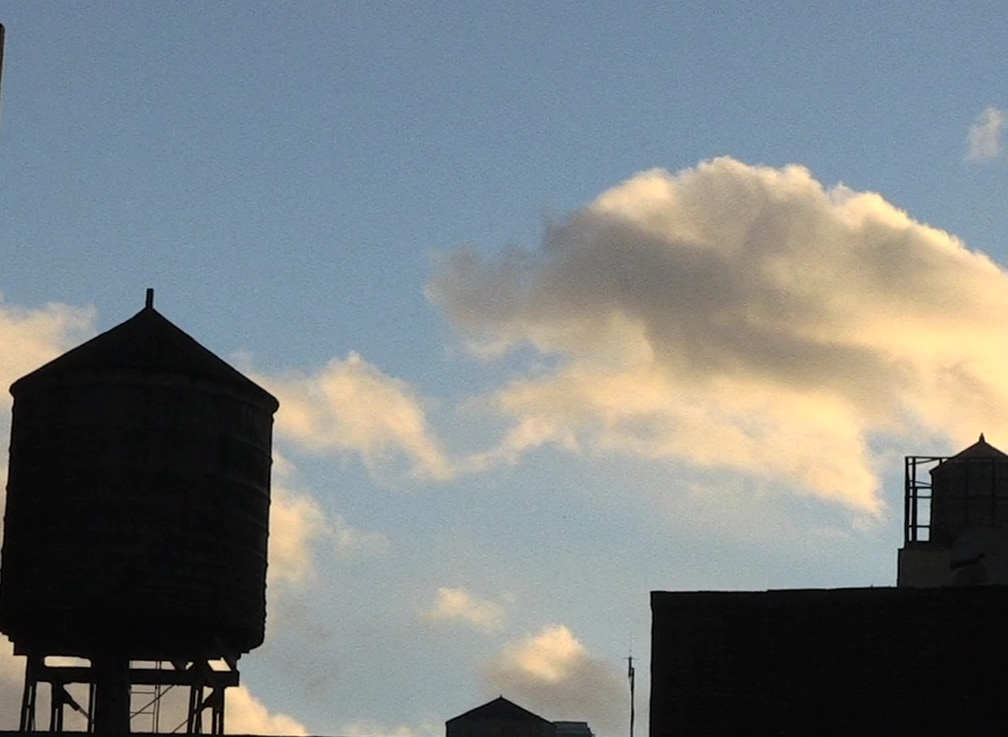
On a warm summer night, an older man is performing under the oak trees that line the sidewalk on 5th Avenue along the side of Central Park. He is bathed in a golden light from the streetlamps. His intentional movements look like a choreographed dance. The man dances with intensity, listening to music that only he can hear, against the background of the traffic driving down the street, the honking of the cars, syncopated with the squeak of a pedestrian’s rubber sole as he walks by.
The performer appears to be homeless with his worldly possessions piled up behind him. He is totally engrossed in his own pursuit, but when an ambulance goes by silently with flashing lights, he stops dancing, puts his hands together in a gesture of thanks, and points towards the emergency vehicle with passion. He returns to his dance with great focus.
The piece ends as this homeless man dances facing the beautifully lit Crown Building (previously the Heckscher Building), one of the most expensive pieces of real estate in the city. The irony is evident, but the man graciously continues to bestow his dance. There is a guilty pleasure in the voyeuristic recording of this dance. It is a private performance that the man is dedicating to the city, and we are privileged to see it. We are only able to watch this precious event titled Once Upon a Summer’s Evening because of the instinctual abilities of video artist Jimmy Akagawa.
Akagawa has wandered the streets of New York since arriving from Japan in 1999, always with his video camera ready to record
his connection with his adopted city and those who live it in. In the early days he used Hi8 analog video cassettes, amassing nearly 500 tapes. He converted to digital video recorders around 2010 which has resulted in over 5000 hours of videos to date. He manages to capture the personality of the city in many different styles: documentary, journalistic, storytelling, profiling. Whichever style he chooses, he provides a conduit to relate to the people, animals, vehicles and architecture of this world-famous city.
His videos include humorous and touching interpretations of a dog’s visions in Scottee’s Dream. A State of Mind is a video of a whimsical New York sky as the clouds pass a neighboring water tower, and Affection, is a seagull’s view of New York City with images of the beaches, waterways, parks, streets and buildings, with the people, animals and vehicles who inhabit them. He also likes to film the behind-the-scenes perspective of New Yorkers which have included musicians, restaurant and construction workers and pedestrians.

One of his larger projects is the recording of 8th Avenue at 33rd street for 20 years. He was first drawn to the location when he saw two men dangling off the side of a large building to paint the wall with an advertisement. He has since returned to the same spot time after time to record the repainting of this south facing wall with different advertisements, understanding that these images are strong representations of our times and our society.
He has recorded this location through all four seasons with a Japanese sensibility, of awareness, appreciation, and respect. All weathers and temperatures are featured. People, vehicles and even pigeons are all part of the scenes as extras but also stars in their own lives.
Much of his artistic videography has centered around the preciousness of the ordinary moment and finding his own happiness in being a part of that experience. He believes that those in-between moments may be the most peaceful, yet unrecognized and unappreciated times in our lives. We live in times where there are wars, crimes and many challenges in the world. Yet this 8th Avenue project has only seen peaceful ordinary moments in the 20-year span. It is truly remarkable.
The appreciation of time is central to much of his work. He aims to capture that fleeting “Present” that immediately becomes the “Past” the moment he has recorded it. He is a witness to the present. Proving his existence and those whom he films. “All of life is a journey. What I see is the process not the result.”

Akagawa explains that watching old films of New York from the late 1800s and early 1900s when there were many more trams and horse-drawn carriages than automobiles, or of Tokyo at the same time when most people were wearing kimonos, allows him to connect with people who are long gone. People who he never knew and were probably long gone before he was even born, and yet they come alive in these films over 100 years later. He is able to acknowledge and relate to these people who lived in a different time. Many of these films from that time are of ordinary moments of people going about their daily lives. Akagawa is continuing in this tradition and archiving the present for future generations to connect with us, centuries from now. G&S





Leave a Comment